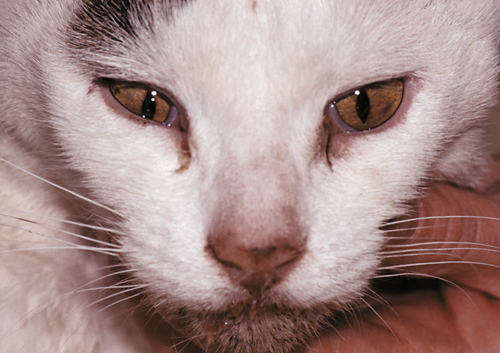Feline Medicine Q&A 23
| This question was provided by Manson Publishing as part of the OVAL Project. See more Feline Medicine questions |
An 8-year-old neutered female DSH presents with depression and a history of antifreeze (ethylene glycol) ingestion.
| Question | Answer | Article | |
| What are the consequences of ethylene glycol intoxication? | Ethylene glycol is an alcohol and a potent toxin, being one of the most common causes of ARF in cats. Ethylene glycol itself is relatively non-toxic (although it causes hyperosmolality). As a result of liver metabolism via alcohol- and aldehyde-dehydrogenase enzymes, toxic metabolites (glycoaldehyde and glycolic acid) are produced, which are directly toxic to renal tubular cells. Glycolic acid produces a profound acidosis and is also transformed to glyoxylate and oxalate, which may be deposited as calcium oxalate crystals in the kidney (causing further damage), urine, and other tissues. Ethylene glycol ingestion can also result in hypocalcaemia and acidosis which may need treatment. Initial signs (1–12 hours following ingestion) are due to CNS toxic effects with depression, nausea, vomiting, nystagmus, ataxia, and seizures. These can be followed by cardiopulmonary signs before renotoxic effects which occur within 24–72 hours. |
Link to Article | |
| What specific therapy should be considered for this cat? | Immediate treatment (within 1 hour of ingestion) involves inducing vomiting, gastric aspiration, and gastric lavage. If cats are presented within 3 hours of ingestion then ethanol therapy is recommended as this saturates the alcohol dehydrogenase enzyme system which is the rate-limiting step for ethylene glycol metabolism. Ethanol is given at 5 ml/kg of 20% solution by intravenous or intraperitoneal injection every 6 hours for five treatments then every 8 hours for a further four treatments. |
Link to Article | |
